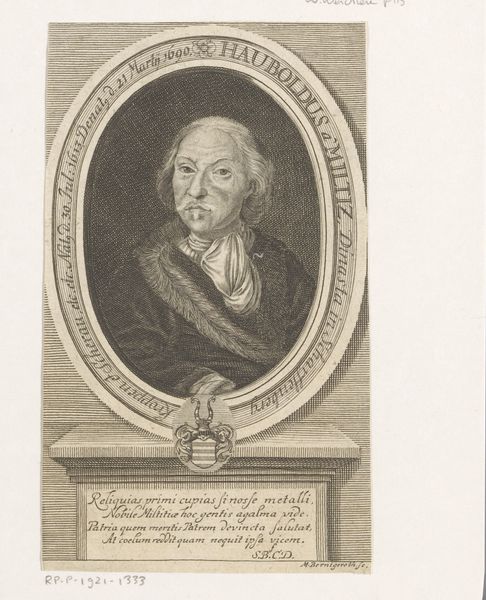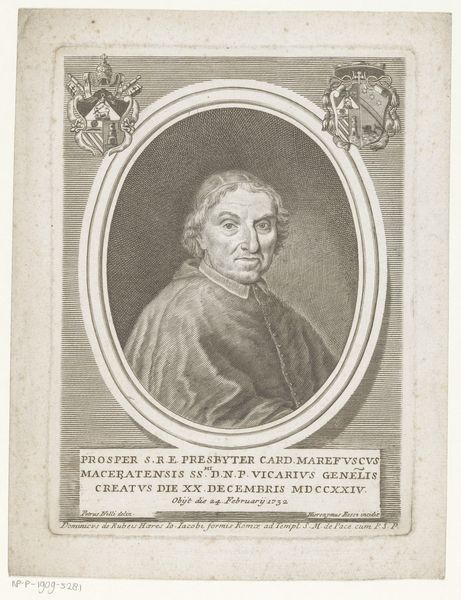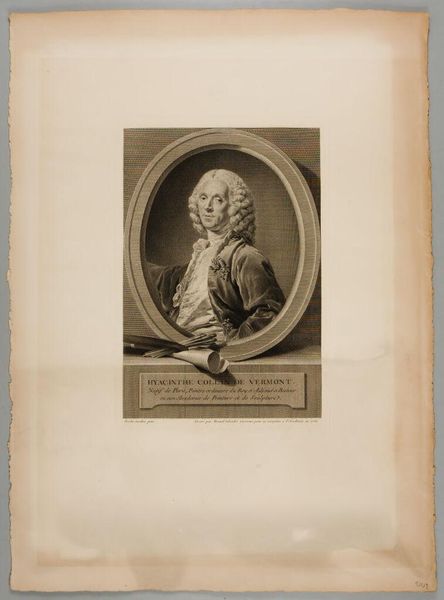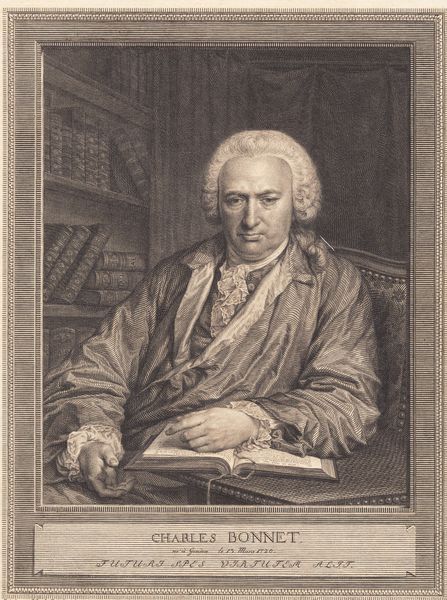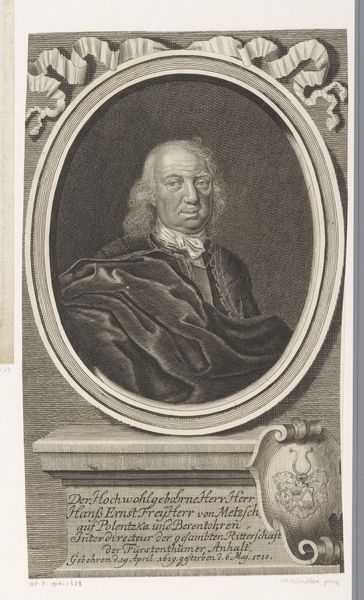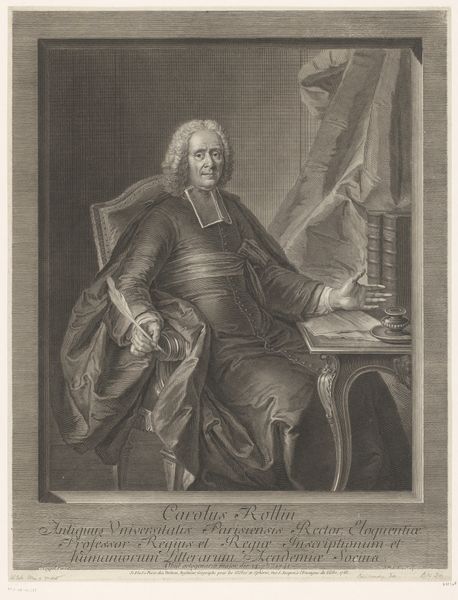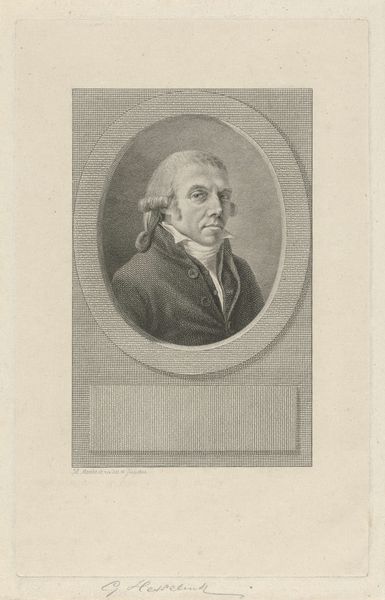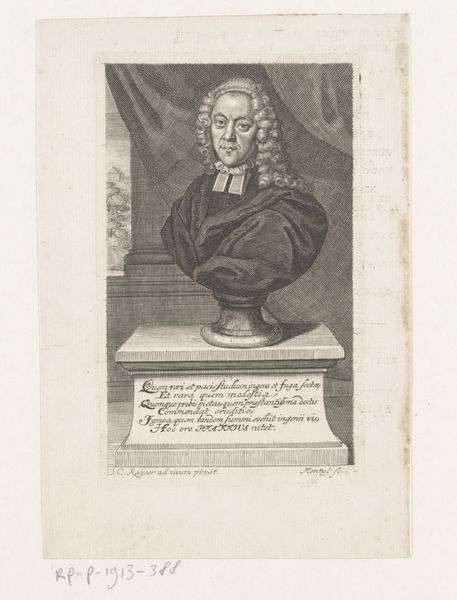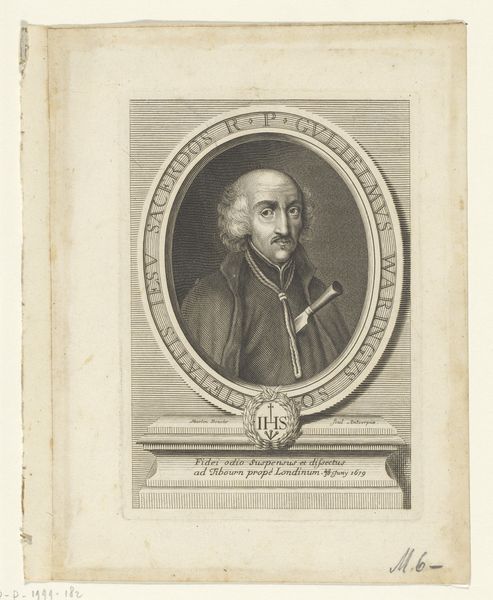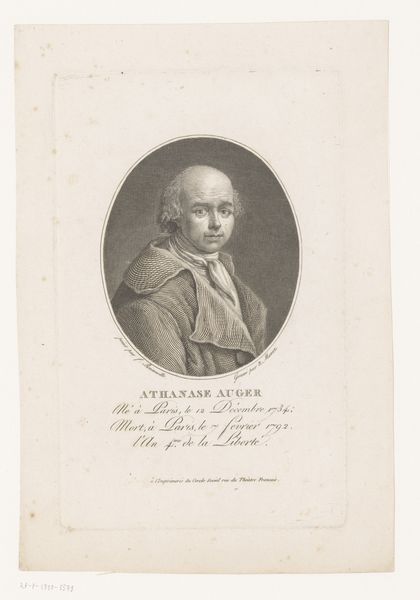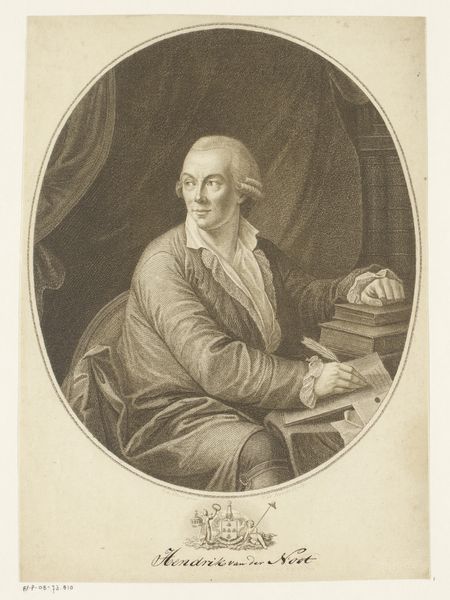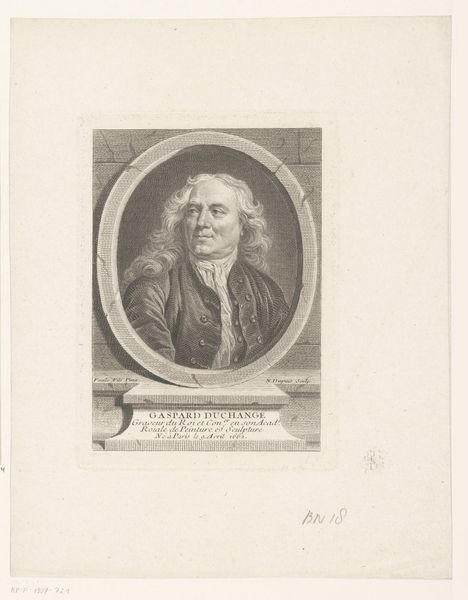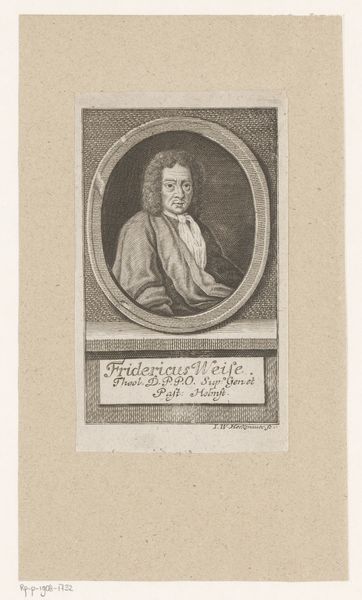
Portrait of Luca Giordano, wearing round spectacles and looking to the left 1692 - 1727
0:00
0:00
drawing, print, engraving
#
portrait
#
drawing
#
baroque
# print
#
old engraving style
#
men
#
engraving
Dimensions: Plate: 7 5/8 × 5 11/16 in. (19.3 × 14.4 cm) Sheet: 7 13/16 in. × 6 in. (19.8 × 15.2 cm)
Copyright: Public Domain
Curator: Let's discuss this intriguing engraving. It's a portrait of Luca Giordano, dating from the late 17th to early 18th century, and presently residing at the Metropolitan Museum of Art. Giovanni Battista Catenaro is credited as the artist. Editor: My immediate impression is one of subtle melancholy. The detailed engraving captures a sense of introspection and quiet contemplation. And those spectacles! What a distinctive feature. Curator: Absolutely. The print, executed in a baroque style, invites a deeper examination into the life and times of Giordano. What I find fascinating is the labor behind the engraving—the tools, the workshops, the engraver meticulously translating an image through manual skill. Consider the socioeconomic status afforded to someone working in print production, making art accessible in multiples. Editor: Indeed. Printmaking held a crucial role in disseminating imagery and ideas, shaping public perception and even influencing the art market. Giordano, a celebrated painter himself, understood the power of image distribution. His likeness, replicated and distributed through engravings, broadened his recognition and solidified his place in the artistic canon. What power dynamics are at play when images like this move through society? Curator: A portrait such as this really raises questions about access to representation, especially in the period of its creation. While Giordano, an artist of some repute, clearly occupied a position to have his likeness produced, access would certainly have been less democratic then, wouldn't you agree? What's truly compelling is the connection between artistry, labor, and access facilitated by printmaking. It disrupts our conventional ideas of uniqueness and high art by embracing multiplicity. Editor: Right. Thinking about the impact this image had in society really forces you to look at the larger questions about the public function of portraits. It makes you think about things like power structures, status, influence. Curator: Considering the social context truly reshapes how we perceive the art, doesn't it? Editor: It certainly does. It really enhances its historical relevance beyond aesthetics. Curator: It truly adds a necessary dimension to interpreting its visual details. Editor: And those marvelous spectacles of his! I shall carry that detail forward today.
Comments
No comments
Be the first to comment and join the conversation on the ultimate creative platform.
